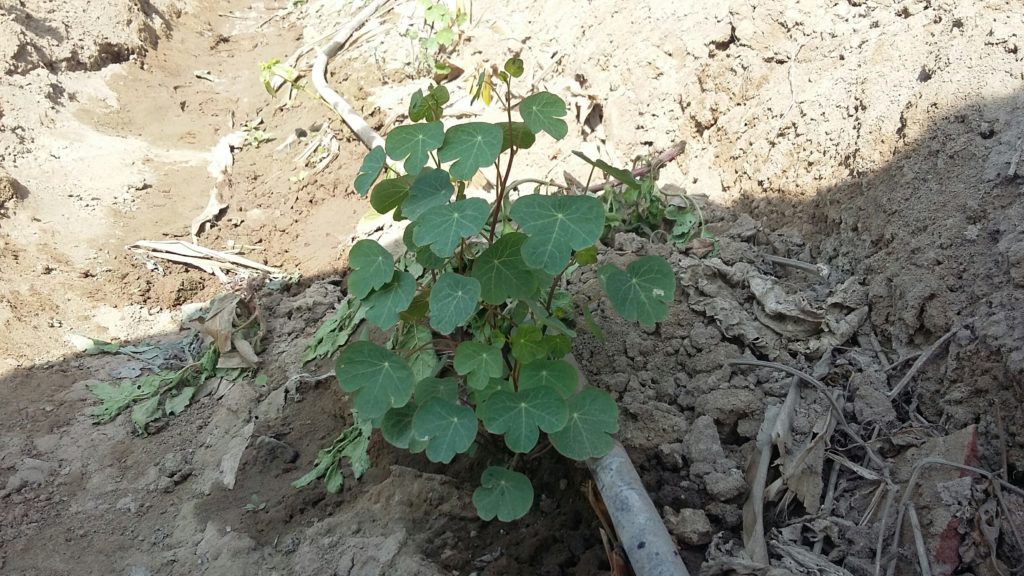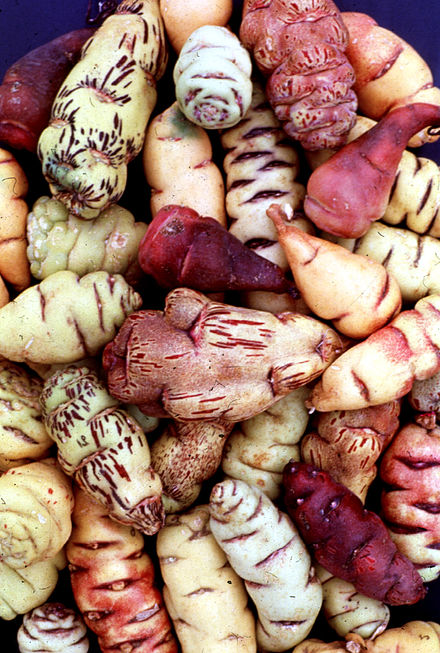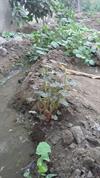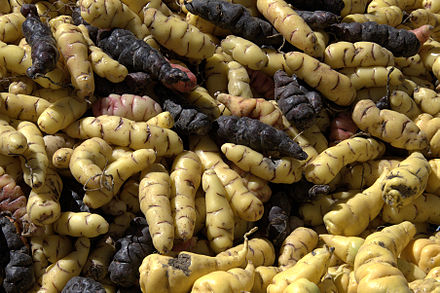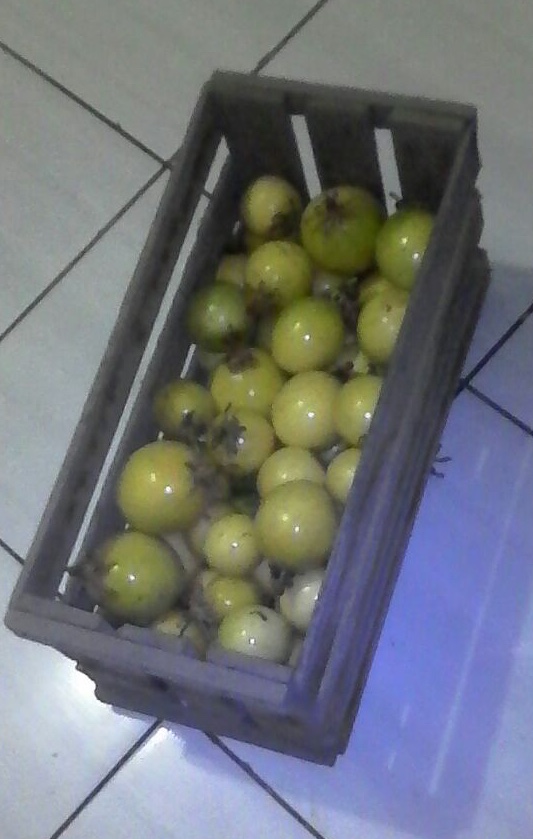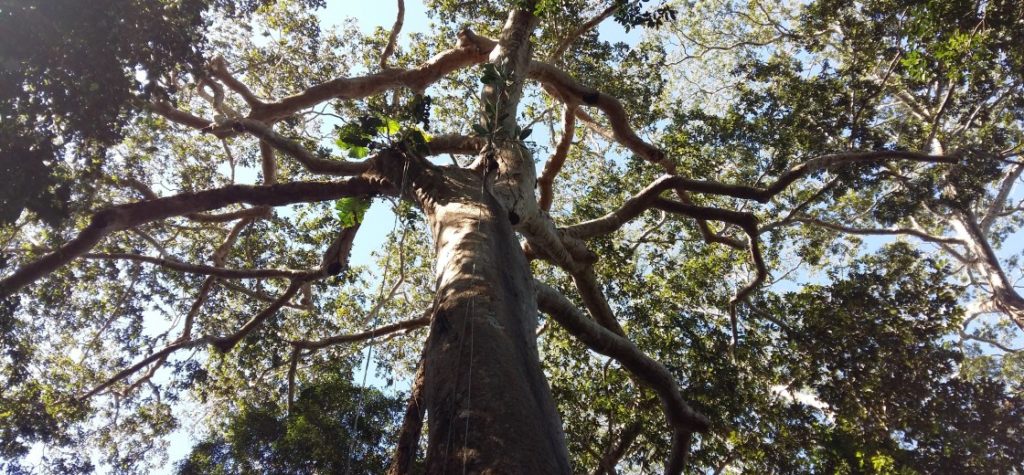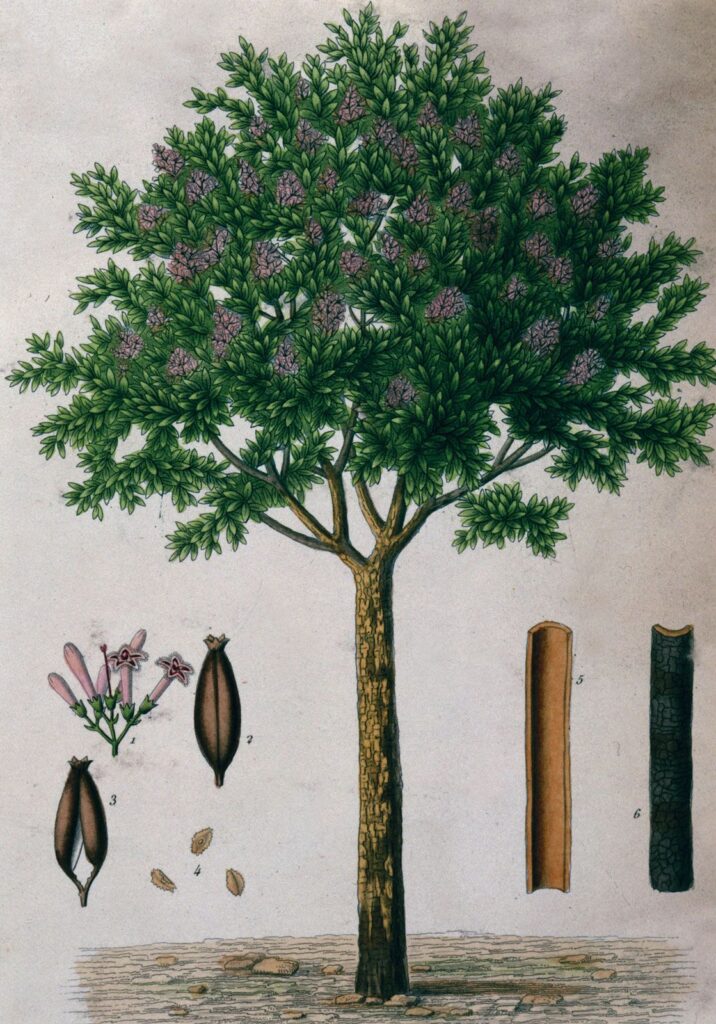
Above and below: characteristic vegetation from Peru’s coastal region illustrated in drawings from Chimú pottery.

Andean crops
Of the ten cereals existing in the vegetable world, four are native to Peru: quinoa, kiwicha, corn and cañihua, all of them invaluable sources of nutrition. Kiwicha and quinoa have been considered by NASA as the ideal food for astronauts. The Andean region’s varied geography permitted ancient Peruvians to cultivate and develop an incredible variety of species and even to study them deeply.
Quinoa
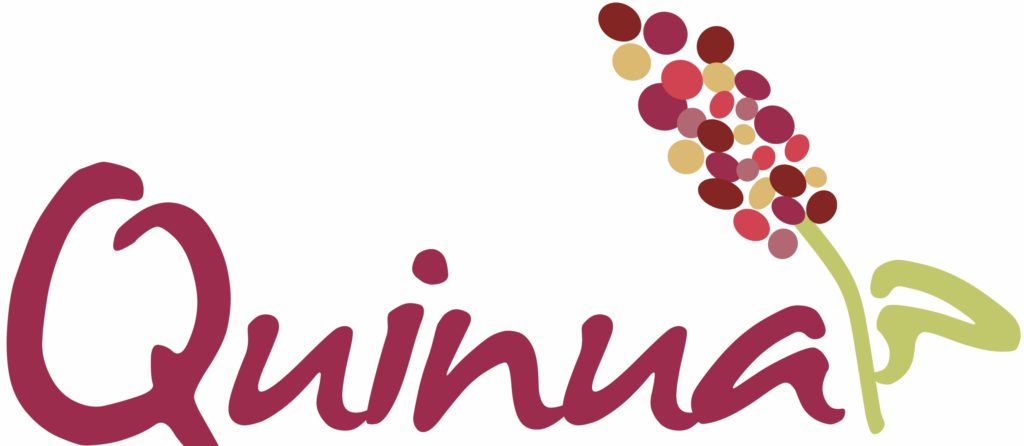
Quinoa is recognized and accepted around the world as a natural food resource with a very high nutritional value. It is of Andean origin and is becoming better known internationally as a high-quality food which is valuable for health and food security, both for present and future generations. Quinoa is very versatile and adaptable to many different climates and production conditions. 2013 was “The International Year of Quinoa”; but one downside of the promotion and export of this crop is its escalating price at home, putting it beyond the reach of poorer sectors of the population in Peru.
The Coca Leaf

On 12th October 1492, when Columbus landed on the island of Guanahani, the Indians offered a handful of dried leaves. It is thought these may have been coca leaves. What is true is that coca had already been a traditional crop for 6,500 years. The sacred plant of the Incas, this leaf has an important place in Andean culture, in which context it is believed to induce wisdom and knowledge. It is used in multiple ways medicinally, as well as a palliative for fatigue and hunger. The use made of it in the narcotics trade has had a very negative influence on the image of a plant which has high symbolic and cultural worth.
The Potato

In 1532 the Spaniards invaded Peru in search of gold. But the real treasure they took back to Europe was the potato. The potato originated in the Andes. Taken by the Spanish to Europe in the 16th century, it quickly spread across the globe. Scientists think the first potatoes were cultivated about 8,000 years ago by communities of hunter-gatherers near Lake Titicaca – high in the Andes mountains, on the border between Peru and Bolivia. Those first farmers obtained the cultivated potato by domesticating wild potato plants that grew around Lake Titicaca in abundance. Over the following millennia, people in the Andes developed potato varieties for growing at different altitudes and in different climates. The potato should be a major component in strategies aimed at providing nutritious food for the poor and hungry. It is ideally suited to places where land is limited and labour is abundant, conditions that characterize much of the developing world. The potato produces more nutritious food more quickly, on less land, and in harsher climates than any other major crop – up to 85% of the plant is edible human food, compared to around 50% in cereals. The International Year of the Potato in 2008 raised awareness of the potato’s fundamental importance as a staple food.
Yucca


Yucca is an important world source of carbohydrates, also known as cassava, manioc or arrowroot. Its tuberous root is used to produce delicious yucca chips, as well as flour and tapioca. It is gluten free but does contain cyanide. Yucca originated in the Americas and is particularly grown now in Africa, but is also grown in the Project Peru kitchen garden.
Maize

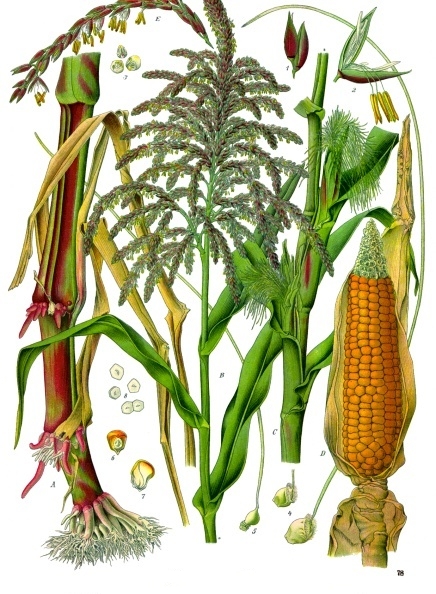
Maize (alternatively known as corn) is a large grain plant first domesticated by indigenous peoples in Mexico about 10,000 years ago. It is also grown in the Project Peru kitchen garden.
Mashua
A traditional Andean tuberous crop familiar in pre-Inca times, the origin of the garden nasturtium. The edible tubers of Mashua are eaten cooked or roasted as a vegetable. Though a minor food source, it is especially consumed among Amerindian populations. Like the garden nasturtiums, it is a herbaceous perennial climber. It is reputed to be an aphrodisiac. It is often grown in the Project Peru kitchen garden.
Oca
A traditional Andean tuberous crop familiar in pre-Inca times, though it no longer grows in the wild. Known as one of the “lost crops” of the Incas it was brought into cultivation for its tubers which are used as a root vegetable, and can come in a variety of colours. Oca is still widely planted in Peru and Bolivia. It is planted and cooked just like potatoes and is often grown in the Project Peru kitchen garden.
Passion Fruit
Known as Maracuyá in Spanish, this fruit is now grown in the casa hogar kitchen garden. The fruit can be round or oval, and can be yellow, green, purple or red in colour. It has a juicy pulp with a large number of seeds. The part of the fruit that is eaten is the pulp and it can also be squeezed to make juice.
Flowers: Cantuta
The Cantuta is well known as the national flower of Peru. The “sacred flower of the Incas” is native to the Andes of Peru and Bolivia and grows at between 1,200 and 3,800 metres above sea level. It is said that the Incas found in it sacred essences that made water stay pure longer. These and other Peruvian flowers are among the designs included among the greetings cards that we sell to support our work: look for “Greetings cards made in Las Laderas”
Trees: the Shihuahuaco tree
The Amazon rainforest covers about 60% of Peru’s territory. It is a paradise of megadiversity. In just one tree, the Shihuahuaco (dipteryx micrantha) in Madre de Dios, entomologists found 5,000 specimens of insects, 80% of them new to science. Some trees are believed to be over 700 years old. However, this is now one of the most endangered trees due to excessive and frequently illegal logging for export of its valuable timber.
Trees: the Cinchona tree
Cinchona, known as the national tree of Peru, features in Peru’s Coat of Arms. Now an endangered tree, it is notable as the original source of quinine, a cure for malaria. Though already known by Amerindian people in Peru and also by Jesuit missionaries there, it was “discovered” and exported profitably to Europe and Asia in the 19th century. In India it became known as the “Fever Tree” and has become a key ingredient in tonic water.
Read more on Eco diversity

